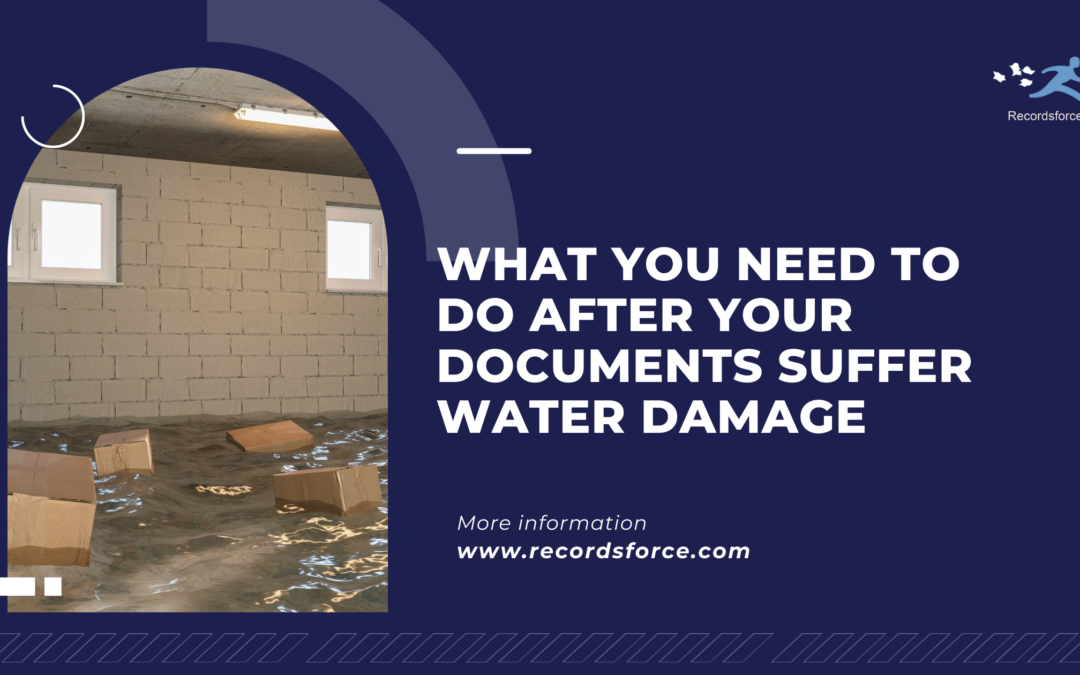When documents get wet, the clock starts ticking. You have less than 24 hours before mold and mildew begin to form. The faster you act, the sooner you can avoid devastating document deterioration. Follow these steps you’ll be able to minimize the damage done to your most important papers after you suffer water damage.
1. Take care of yourself
The toxicity of mold and mildew is a real problem. Don’t leave your employees or yourself exposed to potentially harmful toxins when handling your documents after a disaster. Take proper precautions before doing anything if you do choose to handle your documents yourself rather than calling in the professionals.
2. Keep the mold out
Mold and mildew are the most destructive elements your paper documents can encounter. Left unchecked, they will cause irreparable damage to your records. Dark, wet, and warm conditions are the perfect conditions for mold and mildew to flourish. If the flooding has receded from your building, get a dehumidifier into your document storage room to pull as much moisture out of the air as you can.
3. Freeze your documents
You read that right. Freeze drying documents stops the damaging effects of water in its tracks. It slows the evaporation process and gives you the time you need to get your documents to the restoration facility you choose. The process for freezing documents is as follows:
- Buy these items:
Extra large ziplock bags
Dry ice. You’ll need lots of it depending on how many documents you have.
Cheap coolers large enough to hold all of your documents - Place your wet documents in the ziplock bags and seal them. This will keep dangerous mold and mildew spores away from your documents. If some of your documents have already been contaminated, put them in the same bag to reduce the spread from one set of documents to another.
- Carefully put the bags in the cooler.
- Put dry ice in the coolers over the bags.
4. Get them professionally scanned
Professional document recovery is difficult, exacting work that requires proper equipment, industry expertise, and trained staff to ensure a successful recovery process. While the above steps are things you can do at home to set yourself up for success, they’re only the first steps in ensuring that you’ll actually be able to salvage documents that were damaged due to natural disasters. Set yourself up for success, and let the experts take it from there.
5. Protect yourself in the future
The only way to prevent paper documents from water damage is by not having paper documents. The cost of recovering damaged, wet documents is significantly higher than the cost to go paperless and prevent incidents before they happen.
Recordsforce disaster document recovery services are the best way to make sure you salvage as much of your documents as possible after a flood. The quicker you act, the more of your documents you’ll recover. Contact us today to get started!

